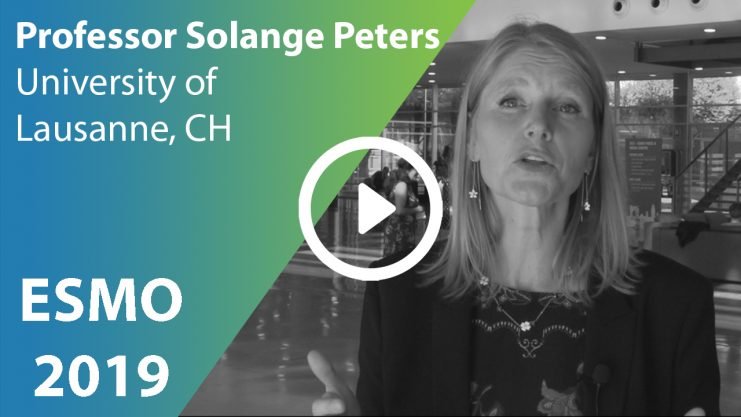Advertisment
Late breaking abstracts – Checkmate 227 study

The final analyses of Checkmate 227, part 1 should help to position nivolumab + ipilimumab combination treatment ..
Written by Christine Clark
CheckMate 227, part 1
The Phase 3 CheckMate 227 trial compared nivolumab (nivo) + low-dose ipilimumab (ipi) against platinum doublet therapy or nivolumab / nivolumab + chemotherapy (CT) as first-line treatment in advanced, non-small cell lung cancer (NSCLC). Ipilimumab, a CTLA-4 inhibitor, induces de novo anti-tumour T-cell responses and nivolumab (an anti-PD-1 agent restores anti-tumour T-cell function, explained Professor Solange Peters (University Hospital of Vaudois, Lausanne, Switzerland). In previous studies the ipi+nivo combination had demonstrated improved survival in renal cell carcinoma and melanoma. The ipi dosing schedule was optimised for NSCLC patients (to 1mg/kg every six weeks) to minimise toxicity.
The final results showed that median overall survival (OS) with nivo + ipi vs CT in patients with tumour PD-L1 expression ≥ 1% was 17.1 months vs 14.9 months (hazard ratio 0.79 (95% CI 0.65 – 0.96, p= 0.007). The OS with nivo alone was 15.7 months. Patients with very high tumour PD-L1 expression (≥ 50%) had better outcomes – median OS 21.2 (95% CI 15.5-38.2), 18.1 (95% CI 14.4-22.1) and 14.0 (95% CI 10.0-18.6) for nivo+ipi, nivo and CT, respectively. Patients with tumour PD-L1 expression of less than 1% achieved a median OS of 17.2 months. In this group DoRs were 18.0 (95% CI 12.4-28.6), 8.3 (95% CI 5.9-9.4) and 4.8 (95% CI 3.7-5.8) for nivo+ipi, nivo+CT and CT.
The median OS for all randomised patients, regardless of PD-L1 status (for nivo + ipi vs CT), was 17.1 vs 13.9 months, HR 0.73 (95% CI 0.64-0.84). There was no consistent correlation between survival outcomes with nivo + ipi vs CT and PD-L1 or tumour mutational burden (TMB) alone or in combination.
The researchers concluded that dual therapy with nivo and low-dose ipi represents a potential new first-line treatment option for patients with advanced NSCLC.
Professor Sanjay Popat (Royal Marsden, London) commented that the reported benefits may be driven by patients with high PD-L1 tumour expression. Nivo monotherapy had no role in the front- line setting due to its limited efficacy, he continued, and ipi adds efficacy but at “a meaningful cost of toxicity”. Based on these results, nivo + ipi could be a treatment option if tumour PD-L1 expression is less than 1% or if it is above 50% but cannot be recommended for 1-49%.
He also noted that the high rate of adverse events (AEs) – 33% grade 3-4 with combination treatment and 12% discontinuation rate – was higher than for CT or nivo alone.
Pembrolizumab is the standard to beat in this situation, he said but, as for nivo + ipi, “Caveat emptor!” was his advice.
Based on presentations given at the European Society for Medical Oncology Congress, Barcelona, September 2019





